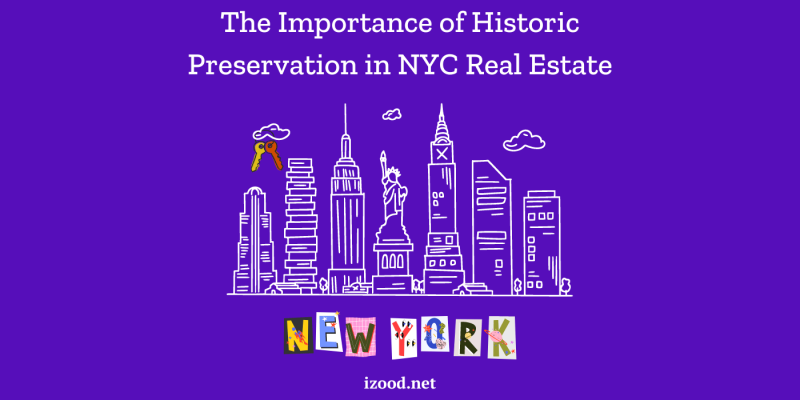
In the bustling metropolis of New York City, where the skyline is continuously reshaped by modern architecture, the importance of historic preservation within the real estate sector cannot be overstated. This commitment not only protects the architectural legacy of the city but also enhances the value of its properties and enriches the cultural fabric of its communities. For those entering the industry, knowledge of historic properties is so crucial that realtor courses near NY often include segments dedicated to this aspect, and becoming a real estate agent in New York demands an understanding of how these dynamics influence the market.
Historical Significance and Real Estate Value
Historic preservation in New York City real estate is vital for maintaining the aesthetic and historical integrity of its neighborhoods. Landmarked properties and districts carry a certain prestige, often translating into higher property values. This is because preserved buildings are limited in supply, inherently unique, and carry a piece of history that new constructions simply cannot offer. Real estate agents, particularly those who have completed realtor courses near NY, understand that these characteristics can significantly attract buyers looking for uniqueness and character in their homes.
Economic Benefits of Historic Preservation
Preserving historical buildings doesn’t just protect cultural heritage; it also offers considerable economic benefits. Studies have shown that historic districts tend to have more stable property values, even in economic downturns. Additionally, the process of restoring and maintaining historic buildings often leads to job creation in fields like construction, architecture, and heritage tourism. For someone becoming a real estate agent in New York, recognizing these economic impacts can provide a competitive edge in marketing properties within these districts.
Sustainability and Environmental Impact
Historic preservation is also a form of sustainability. The adage “the greenest building is the one already built” highlights the environmental benefits of utilizing existing structures instead of building new ones. Preserving buildings reduces the demand for new materials, decreases waste, and typically involves less energy consumption compared to new construction. For real estate professionals educated in realtor courses near NY, advocating for and marketing these properties aligns with growing consumer interest in sustainable living practices.
Community Identity and Cohesion
Historic buildings give neighborhoods a distinct identity and foster a sense of community. They serve as physical reminders of a city’s past, contributing to a shared communal heritage. This aspect is particularly poignant in a city like New York, where every borough and neighborhood has its own unique history reflected in its buildings. Real estate agents, especially those new to the field after becoming a real estate agent in New York, can use this community aspect as a selling point, appealing to buyers’ desires to be part of a neighborhood with a rich history.
Challenges in Historic Preservation
Despite its benefits, historic preservation in NYC real estate faces several challenges. The cost of maintaining and restoring historic properties can be prohibitive. Additionally, regulatory requirements can be stringent, with property owners often needing to navigate complex landmark preservation laws. For real estate agents, understanding these challenges, often discussed in realtor courses near NY, is crucial when advising clients who own or are interested in purchasing historic properties.
Balancing Modern Needs with Historical Integrity
One of the biggest challenges in historic preservation is balancing modern needs with preserving historical integrity. As the city evolves, there is a continuous need to adapt old buildings to meet contemporary standards and uses while maintaining their historic character. This balancing act requires innovative solutions and sometimes, significant investment, both of which are key topics for those becoming a real estate agent in New York.
Conclusion
The role of historic preservation in New York City’s real estate market is multifaceted, impacting everything from property values to community identity. For real estate professionals, particularly those who have taken realtor courses near NY, the ability to navigate the complexities of historic properties is an invaluable skill. As the city continues to grow and evolve, the preservation of its historical architecture will remain a key element in maintaining the unique character and vibrancy of its neighborhoods. For anyone becoming a real estate agent in New York, a deep understanding of this area not only enhances their professional skill set but also contributes to the city’s ongoing narrative, weaving the past with the present in one of the world’s most dynamic urban landscapes.











